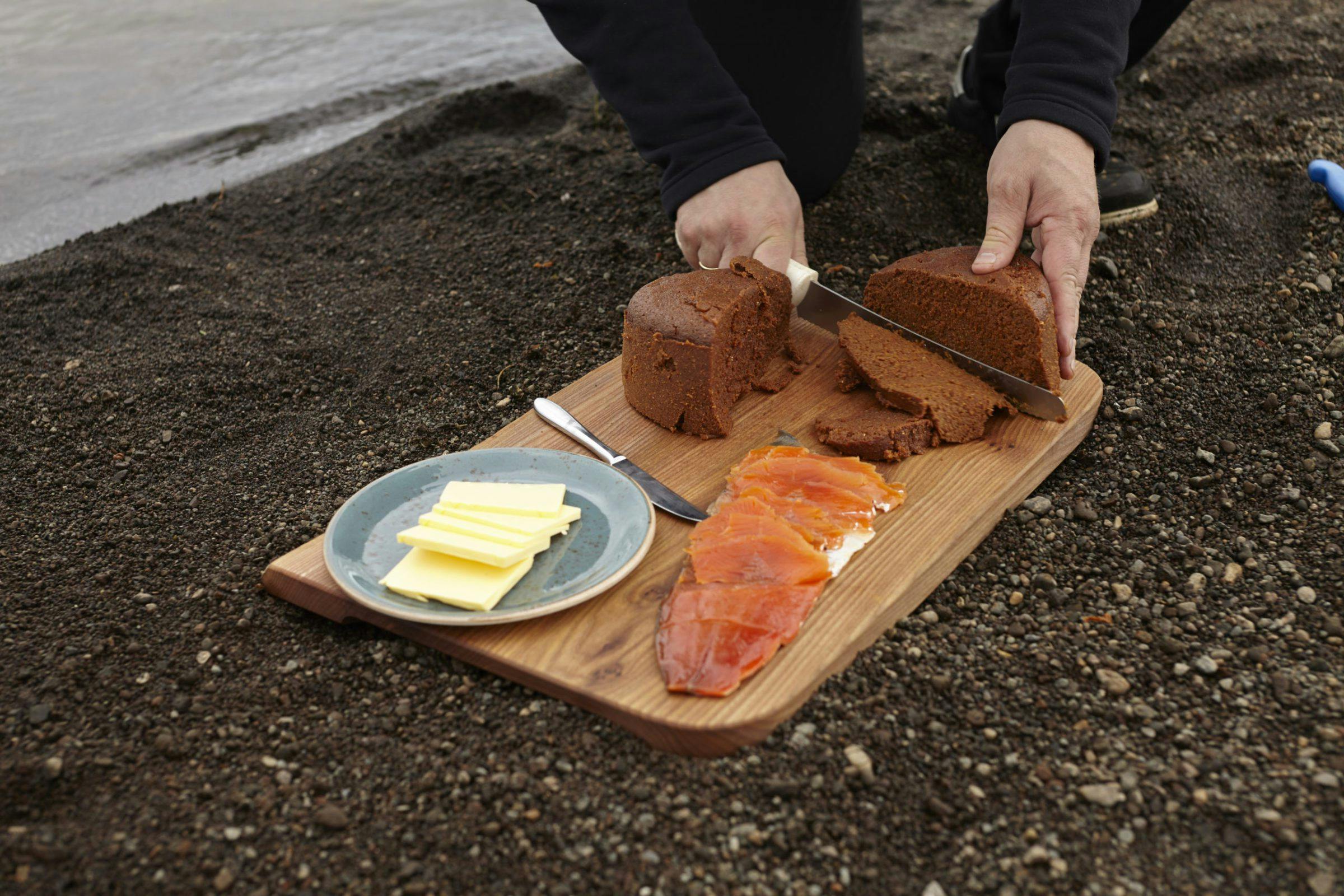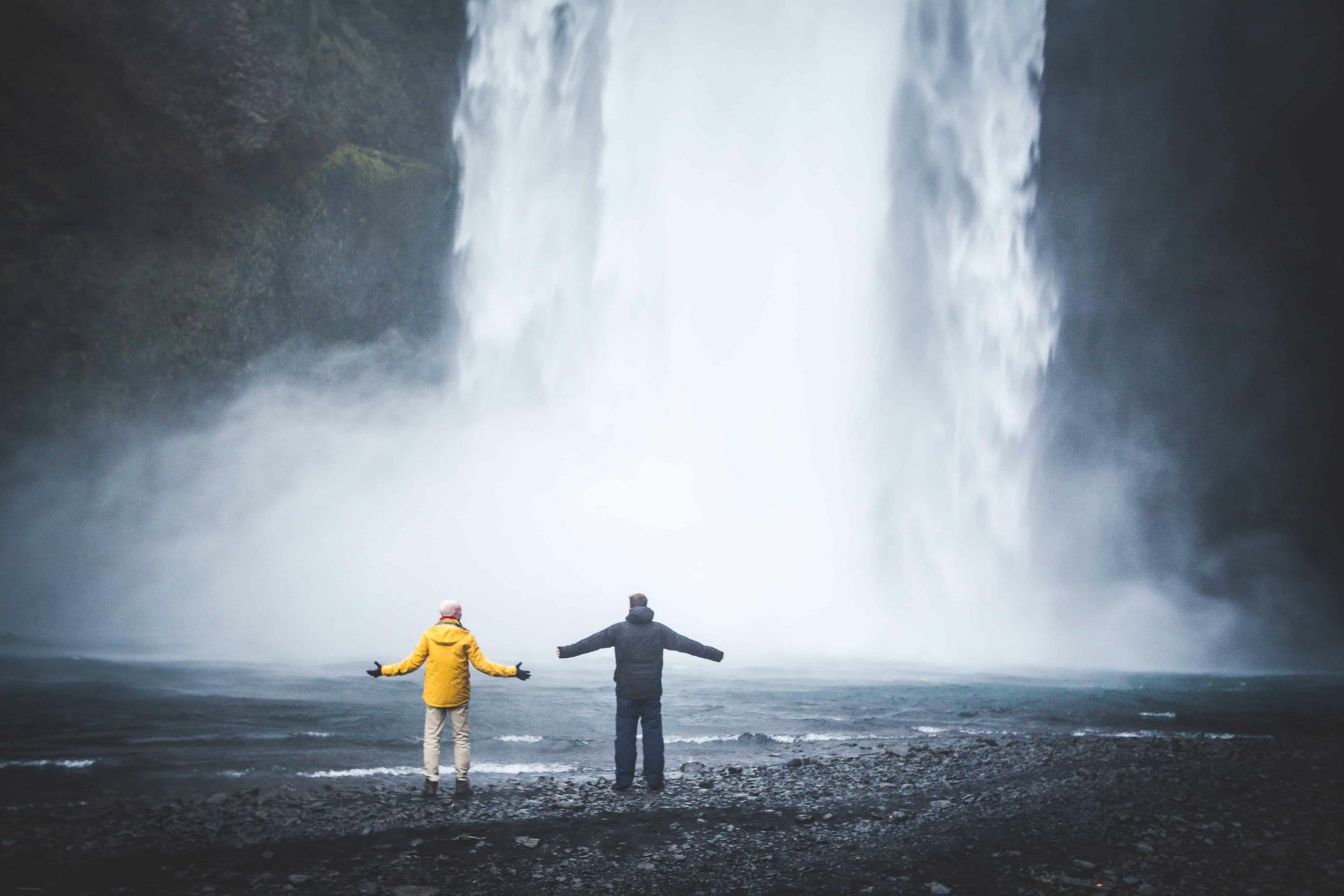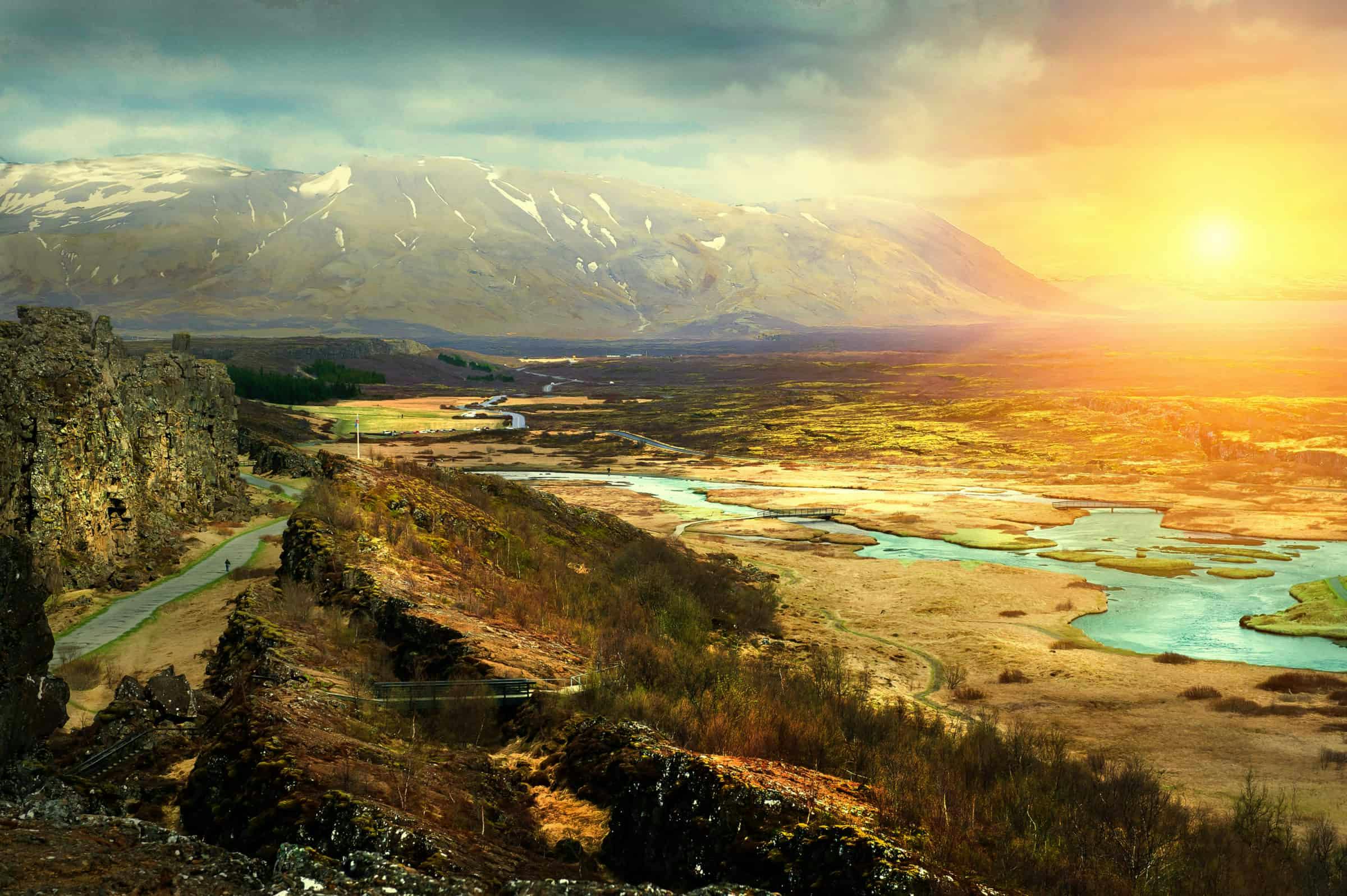Culture
There is far more to Iceland than just the nature. Icelandic culture is just as diverse as the landscape. Our history might not be long, but we are proud of it and our many great artists.
Icelanders are proud that they still speak the ancient language of the Vikings, but they certainly don’t live in the past. Their cherished ancient heritage lives in harmony with the most exciting innovations from the world of arts and culture today. This refreshing mix of local, traditional, progressive and cosmopolitan culture appeals to almost every taste.
A brief history lesson
Iceland was the last European country to be settled, mostly by Norsemen in the 9th and 10th centuries. They came mainly from Norway and elsewhere in Scandinavia, and from the Norse settlements in the British Isles, from where a Celtic element was also introduced.
The language and culture of Iceland were predominantly Scandinavian from the outset, but there are traces of Celtic influence in some of the ancient poetry, in some personal names and in the appearance of present-day Icelanders.
In the beginning
The first permanent settler of Iceland was Ingolfur Arnarson, a Norwegian Viking who around 874 AD made his home where Reykjavik now stands. In 930 AD the Viking settlers of Iceland founded the world’s first parliament, known as the Althing. They established a constitution based on individual freedom and land ownership, with local chieftains gathering annually to elect leaders at Thingvellir, a natural amphitheater formed out of lava.
Erik the Red and Leif the Lucky
It was a Viking era filled with optimism, even for Erik the Red, who arrived in Iceland after being banished from Norway for committing murder. Unfortunately Erik the Red committed murder again in Iceland and was to be banished from there as well, so he gathered a fleet of 25 Viking long ships and led a colonial expedition west to Greenland.
Before he left Iceland, Erik fathered the most famous Icelandic Viking, Leif Eiriksson who was also known as ‘Leif the Lucky.’ In the year 1000 Leif Eiriksson sailed even further west than his father, becoming the first European to reach North America, which he called Vinland.
Christianity and foreign rule
Also in the year 1000 Iceland adopted Christianity, followed by a prosperous period as described in the classic Icelandic Sagas. In 1262 Norwegian King Haakon asserted control over the island by instituting devastating taxes and trade embargos that were upheld when Iceland was taken over by Danish rule under a Scandinavian union.
From centuries of hardship to independence
For over six centuries Iceland was plagued with abysmal poverty, disease, starvation and natural disasters that nearly extinguished the small country. After so many centuries of hard times, an independence movement began in the early 19th century and reached full force under the outspoken leadership of a nationalist named Jon Sigurdsson. His efforts helped end the trade monopoly in 1854, and domestic autonomy was established in 1874, followed by home rule in 1904 and limited sovereignty in 1918. Ties to the Danish crown were fully broken in 1944 and today Icelandic Independence Day is celebrated on June 17, the birth date of Jon Sigurdsson.
The Arts in Iceland
Considering that Iceland has only 376,000 people, the number of museums and art galleries in the country is astounding. Even in small towns and out-of-the-way fishing villages, you will encounter some public place dedicated to preserving the national heritage or displaying the work of local artists.
From the avant-garde to the historical, Reykjavik’s galleries, museums and theaters support a vibrant yet sophisticated artistic culture. The Reykjavik Arts Festival, cutting-edge music festivals like Airwaves, special exhibitions and stage productions mean that the cultural calendar is always full of events for the visitor to enjoy.
Music
Iceland is a nation of music lovers, with a trending music scene that has gained widespread international acclaim. The scene offers a diversity of styles and genres with everything from punk and indie rock to chamber music and hip-hop.
The Icelandic Symphony Orchestra
The capital boasts a large number of intimate music venues, as well as the newly opened Harpa Concert Hall which houses the Icelandic Symphony Orchestra. Iceland’s cultural season begins in the fall with the first concert by the orchestra, which has won fine reviews for its regional tour performances. Throughout the season the Icelandic Symphony Orchestra gives around 60 performances which include traditional classical concerts and contemporary music.
The Icelandic Opera
The Icelandic Opera also opens its cultural season in the fall and produces about two to four operas or other musical events throughout the winter at its new home at Harpa Hall. The Icelandic Opera is a world-class professional company, featuring Iceland’s top performers including the country’s newest opera star, Gardar Thor Cortes.
Contemporary music
Reykjavik is renowned for its ever evolving contemporary music scene with everything on offer from jazz to heavy metal every night of the week/throughout the year. Gigs are held in local cafes and tucked-away bars where you may up and coming bands or some of the more established acts that have gone on to international fame like Olafur Arnalds, Of Monsters and Men, Emiliana Torrini and Kaleo, just to name a few.
Music festivals
There are a number of wonderful music festivals throughout the country and the most celebrated are the Reykjavik Jazz Festival in August, Iceland Airwaves Music Festival held in November and the Secret Solstice festival in June, all of which draw bands and music fans from all over the world.
Visual arts
From avant-garde nightlife to sustainable geothermal energy systems, Iceland has never been short on innovation. Artists and designers find inspiration and innovation in Iceland’s outstanding surroundings which is evident in unique works of visual art from paintings to sculptures to jewelry and glass work.
The visual arts are highly valued in Icelandic culture as witnessed by the vibrant art scene displayed on walls everywhere from clothing boutiques and cafes to hotels and office spaces.Reykjavik has always been the hotbed of Iceland’s subversive creativity renowned for its vibrant, energetic character. A walk around the capital reveals dozens of cool galleries, as well as the pensive architecture of Gudjon Samuelsson, the color-drenched paintings of Johannes Kjarval and the bold sculptures of Einar Jonsson.
Art galleries
Iceland is home to a wide variety of private and public galleries, many of which can be found in small towns and villages throughout the countryside. The capital is where the largest museums and galleries are located and among the most visited are the Culture House, Einar Jonsson Museum, and the National Gallery. Some museums are architectural delights in their own design, others galleries are intimate and cozy; while some of double as cafes or event venues.
Icelandic design
Design in Iceland is a field that has been growing rapidly from its craft-based roots into a thriving industry. A trait typical of contemporary Icelandic design is its pioneering spirit using sustainable products with a playful unique style. Using the country’s few natural resources as materials for products results in a range of designs unique to Iceland. Pottery made from volcanic lava, lights from dried fish sit alongside aluminum stools and belts created from salmon skin leather. The best time to soak up Iceland’s emerging and established design talent is during the Design Festival in Reykjavik held in March.
Artist such as Ólafur Elíason and Ragnar Kjartansson have found international fame with their innovative art.
Performance arts
The cultural scene in Reykjavik is renowned for its vibrant, energetic character. The city is packed with metropolitan delights and is especially strong in the performance arts, from film to theater and dance. A special Culture Night is held in August where the city becomes a living stage for theatrical performances in unexpected locations.
Theater
Iceland offers up exceptional theater with actors and directors of international caliber. The capital has a choice of many different venues and has two full-time companies performing at the National Theater and the Reykjavik City Theater year round. Broadway-style musicals bring out the best-of-the-best talent with very reasonable ticket prices.
Dance
The Icelandic Dance Company stages dance performances between September and March with the base of their operations at the City Theater in Reykjavik. The company which has toured extensively abroad is made up of both Icelandic and international dancers. In recent years the Icelandic Dance Company has gained recognition as a contemporary dance company on a global scale.
Film
A blossoming genre on the Icelandic cultural scene is the film industry with Icelandic actors, writers and directors making waves on the international circuit. Filmmaker Fridrik Thor Fridriksson was nominated for an Academy Award in 1992 for ‘Children of Nature’ and was named one of the most influential filmmakers in Europe. Baltasar Kormakur is another heavyweight figure making a name for himself writing and directing major motion films such as A Little Trip to Heaven,Contraband, Everest and The Oath.
Iceland also has two Palme d’Or winners with Bjork as the Best Actress in Lars Von Trier’s ‘Dancer in the Dark,’ and in 2013 writer-director Gudmundur Arnar Gudmundsson won Special Mention for his short film ‘Whale Fjord’ at the Cannes Film Festival.
Icelandic composers are becoming increasingly sought after for television and fil scores and include Bafta winner Ólafur Arnalds and Academy Awards nominee Jóhann Jóhannsson.
Literary heritage
This outstanding literary history begins with ancient medieval literature made famous by the Sagas, the Edda poems and the Islendingabok (Book of Icelanders) and continues today with more books produced per capita than anywhere else in the world. The Icelandic language has changed very little over the centuries and modern Icelanders are still able to read the 1000-year-old Sagas which are on display at the Culture House in Reykjavik.
The Icelandic Sagas
The renowned Icelandic Sagas are one of the world’s most astonishing literary achievements and have had a significant influence on European culture. Between the 13th and 14th centuries Iceland experienced a golden age of writing when dozens of medieval Sagas, or ‘stories’ were written featuring the colorful lives of the early settlers, their lives, families and struggles.
Most historians and scholars agree that the Sagas are a combination of fact and fiction but all of the locations mentioned in the stories are real. Travelers interested in seeing where some of the most dramatic events of the Sagas took place will enjoy visiting Reykholt in West Iceland, Snaefellsnes peninsula, the Icelandic Saga Center at Hvolsvollur in the South, and Saudarkrokur in North Iceland.
The epic Edda
Early Icelandic literature also included the celebrated Edda poems, a collection of legends written between the 9th and 13th centuries with vivid descriptions of heroic and tragic tales from ancient Norse mythology. The ‘Prose Edda’ was authored by Icelandic poet and historian Snorri Sturluson who presumably intended these writings to serve as a guidebook for beginner poets who aspired to become ‘skalds’. Skalds held an elevated, even mystical status in the community and in kingdoms because they were entrusted with preserving world history in their verse and lifting spirits. Even to this day, poetic talent in Iceland is highly regarded and seen as a noble trait.
Halldor Laxness and modern day literature
In the 19th and 20th centuries Icelandic literature flourished once again when Halldor Laxness was awarded the Nobel Prize for Literature in 1955 for his novel, Independent People.
The great Icelandic narrative tradition is alive and well in Reykjavik which was recently named UNESCO World City of Literature. The city was recognized for its strong presence of writers, poets and children’s book authors who give it a unique position in the world of literature.
Folklore and legends
Despite today’s globalized world of modern age technology and electronic media, there are ancient folklore beliefs that are alive and well in Iceland. Surveys show that more than half the nation believes in elves and ‘hidden people,’ or at least don’t deny their existence. (It’s considered bad luck to do so)
Elves – ‘the hidden people’
The ‘hidden people’ or huldufolk are like elves. They look like humans and are believed to live in the lava rocks. According to legend, Eve hadn’t finished washing her children when God came to visit, so she had to hide the unwashed children away, and they were destined to remain forever ‘hidden.’
The elves of Iceland are considered benevolent beings but are fiercely protective of their homes. Traditionally, great harm has come to those who disturb an elf’s dwelling. Respectful of their elfin neighbors, Icelanders go to great lengths to avoid disturbing rocks where elves are said to live. There are several cases where the highway department has consulted local ‘elf experts’ who recommend alternative routes for new roads so they will do the least harm to the Huldufolk.
Elves are invisible to nearly all humans, but are most likely to be spotted on certain days of the year: New Year’s Eve, Twelfth Night, Midsummer Night and Christmas. Visitors to Iceland can learn about elves in Hafnarfjordur, a town just outside Reykjavik that has special tours, an elf spotting map and a dedicated school offering a real elfin education complete with diploma.
The folklore story of Dimmuborgir
Trolls are equally elusive members of the Icelandic folklore. They only come out after dark because if they are caught in sunlight they turn into stone. The Icelandic countryside is scattered with oddly shaped lava formations that are said to be the bodies of petrified trolls, trapped in stone for all time.
One out of many Icelandic folklore stories involving trolls is the one of Dimmuborgir, the lava field in north Iceland. The story goes that one night, the trolls residing in the area decided to have a big party and invited all their troll friends to join. The party ended up being so much fun, that they forgot the sun was coming up. So, once the sun came up they turned into stone forever – which we know see as the lava pillars that make up Dimmuborgir. Those who have visited Dimmuborgir… well, all we can say is that must have been one heck of a party!
Christmas folklore
Iceland’s beloved folklore also adds to the mystique and thrill of the Christmas Season with no less than 13 mischievous Yule Lads or ‘jolasveinar’, who are supposed to be descendants of trolls or elves. They live in the mountains with their terrifying ogress mother Gryla and her giant black cat, which eats all the children who don’t receive new clothes for Christmas.
After Christmas, the Yule Lads head back to the mountains one at a time until they’ve all gone. On New Year’s Eve things get really interesting when, according to local folklore, elves become visible, people come out of their graves, seals take human form and cows develop human speech. Needless to say the holidays are not a dull time to visit Iceland.


